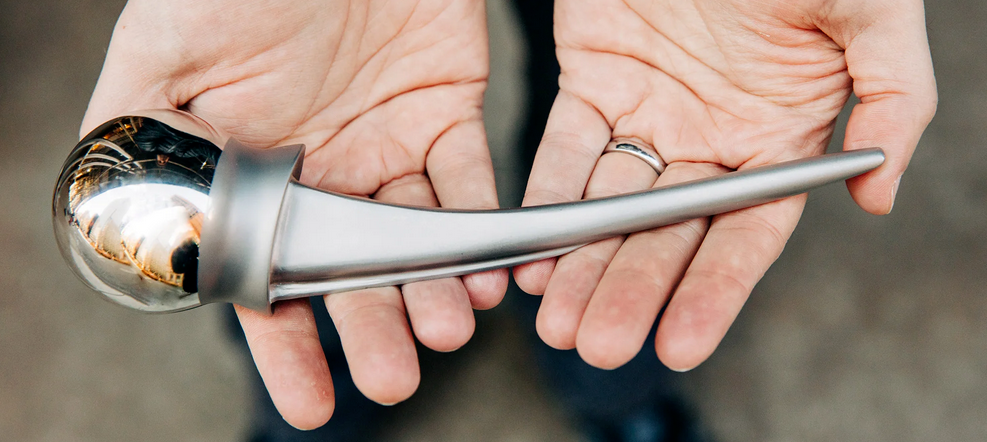Titanium and its alloys are essential engineering materials. Owing to their fantastic combination of mechanical properties, they can be found in a variety of applications, such as jet engine blades and golf club heads. They are also valuable biomaterials due to their excellent corrosion resistance and biocompatibility. In the biomedical industry, titanium alloys found use in implant devices, for example, dental implants and the stem of a hip replacement. It is no wonder that they are called wonder material. Though their strength is many, titanium and its alloys’ use are still limited due to its apparent weakness, namely, its tribological properties. This means titanium alloys are not ideal in applications where they are in moving contact with another material/component.
Titanium’s poor wear characteristics have been well documented for decades. Among the many explanations, the three highly cited reasons for titanium’s poor tribological properties are [1]:
1. Low work-hardening capability
2. Insufficient protective capability from their tribo-oxides
In the biomedical industry, this means titanium and its alloys are not the best materials to use in joint replacement. In fact, titanium is an inferior material to cobalt-chromium alloys simply because titanium has a more damaging effect on the plastic liner of a joint component, which results in a lower life of the joint replacement as a whole [2].
Currently, there are many research studies that try to improve the wear characteristics of titanium. Naturally, many of those are focused on improving the surface of the material since the wear is a surface phenomenon. The advancement of metal additive manufacturing may also pave the way for more opportunities to improve the wear characteristics of titanium. Indeed, this is also my personal research focus. With the many controllable parameters in additive manufacturing, e.g., scanning strategies, laser parameters, and powder composition, I hope to manufacture a better titanium surface that will be more appropriate for tribological properties. When I achieve that, you’ll be sure to hear it in BioTrib’s blog!
References:
[1] X. X. Li, Q. Y. Zhang, Y. Zhou, J. Q. Liu, K. M. Chen, and S. Q. Wang, “Mild and Severe Wear of Titanium Alloys,” Tribol. Lett., vol. 61, no. 2, p. 14, Feb. 2016, doi: 10.1007/s11249-015-0637-8.
[2] M. Long and H. J. Rack, “Titanium alloys in total joint replacement—a materials science perspective,” Biomaterials, vol. 19, no. 18, pp. 1621–1639, Sep. 1998, doi: 10.1016/S0142-9612(97)00146-4.

This article was written by Vidhiaza Leviandhika as part of an ongoing series of scientific communications written and curated by BioTrib’s Early Stage Researchers.
Vidhiaza is researching the Development of Development of 3D-printed gradient alloys for joint implant component at Uppsala University, Sweden

